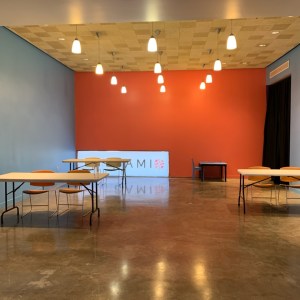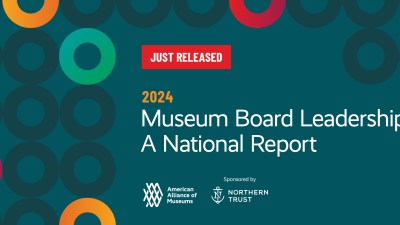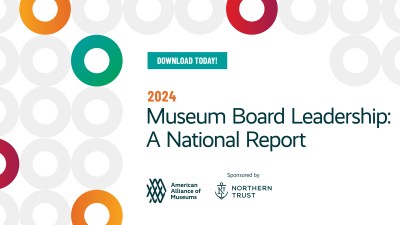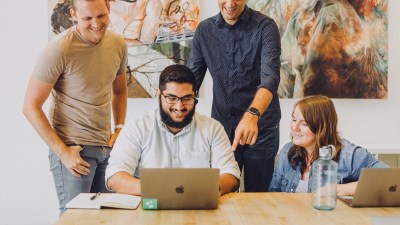
This year has exposed the vulnerabilities of so many critical systems in the US, including health care, education, and the social safety net. In the latest edition of TrendsWatch I profiled many ways museums are caring for populations damaged by failures in these systems—serving as COVID testing sites, as food banks and community gardens, and sharing their space with local schools. Now the power grid joins the growing list of fragile systems that have faltered under pressure. As extreme cold gripped the country last week, nearly 3 million families lost power in Texas alone, coping with burst pipes, scarce resources, and buildings ill-equipped for sub-zero weather. I’m proud (but not surprised) to find museums rising to this challenge as well. Today’s guest post is by Claudia Martinez Gray, Director of Education at the International Museum of Art & Science in McAllen opening its doors to neighbors dealing with extreme cold and power outages.
Download your free copy of TrendsWatch: Navigating a Disrupted Future and use the comments section, below, to share more stories of museums caring for the most vulnerable in this difficult year.
–Elizabeth Merritt, VP Strategic Foresight and Founding Director, Center for the Future of Museums.
Millions of Texans are shaking ice off their boots, homes and cars while recovering from Winter Storm Uri, a rare winter occurrence that blew through the entirety of the state. The International Museum of Art & Science (IMAS) is located in McAllen, a fast-growing city nestled in Deep South Texas. While we did not receive the snowfall of North & Central Texas, thousands in the area were without power and water for many days due to an overwhelmed power grid and frozen pipes. You may be wondering: how did a winter storm shake up a small museum along the US-Mexico border? I pose, instead, this critical question: how did a museum pivot to serve its community during a weather crisis?
During the week of February 13-17, 2021, many Texans sat in cold darkness, anticipating the sun to peak out from the grey clouds as they struggled to keep warm in the record-breaking temperatures and piercing gales up to 20 mph. Living in South Texas, I never thought the community would need to worry about frozen pipes, cold-burnt crops, and lack of cold weather gear (or stunned sea turtles). We are accustomed to mild, dry winters. In fact, infrastructure in Texas is built to stay cool and most utilities are not winterized. Luckily, the museum never lost power or water and, understanding how fortunate we were, the team decided there was only one thing we could do.
The IMAS quickly transitioned itself into a daytime warming center. We waived admission for three days, February 18-20, to welcome neighbors without power. To keep within CDC guidelines, we prepared to meet 50% capacity, and, per our usual policy, we asked visitors to practice physical distancing and wear face masks when on the museum campus. Staff quickly turned our out-of-service-due-to-COVID-19 hands-on areas into charging stations with spaced out lab tables and extension cords. A supply station offered hand sanitizer and writing tools for any folks who made use of our public Wi-Fi for school or office work. While we did not have the resources to offer warm food like many local businesses, we did have a stock of unopened cocoa mix from a cancelled event. When life gives you a winter storm, you make hot chocolate. Visitors were able to take the hot drink to-go to keep warm.

Each day, the marketing team waited for confirmation of power (as there were rolling blackouts) to announce on social media that we were free and warm. We did wonder if folks would get the message in time, but those concerns were quickly dismissed. Our first announcement was shared nearly 300 times within 30 minutes of posting on Facebook. Interestingly, some visitors were families who did have power but were seeking some respite from cabin fever. Later, one patron commented on the post, “Thank you! We felt so inspired by the colorful exhibits!”
Our education team was prepared to host several virtual fieldtrips that week. However, these were postponed since the local school district cancelled classes. Instead, Educators assisted Visitor Services and floated around helping guests and giving impromptu tours. In our science lab, we host a variety of Ambassador Animals, from reptiles to bugs. The children were so happy to see and learn about how our cold-blooded Ambassadors keep themselves warm during the winter (you’ve got to love an unexpected learning moment!) and pick-up free activities and resources courtesy of our local public utility.
Over 250 visitors sought warmth at the IMAS in the days following the storm, more than double the usual weekend attendance since reopening our doors in June 2020. When our community was in need, we provided for our neighbors and this is how they will remember us. It will be a bright memory amongst the dark days that made up the historic winter storm of 2021.
As climate change becomes more volatile and unstable, it is important for institutions to be open to innovative solutions to unforeseeable crises when developing emergency preparedness plans. Certainly, they should also consider the positive actions they can take to support the community in times of crisis. The practice of becoming a warm spot was surprisingly doable with limited time and with a small team.
While we cannot control external systems, we can control our preparedness and response to unexpected events. From a global pandemic to climate change to economical shifts, it is clear museums are not short of challenges to consider. Using strategic foresight, it is possible to have a plan of actions that are taken to have positive outcomes. I believe this experience and our response to it will influence our new strategic plan that is currently being developed. Take it from this half-thawed out Texan, it should not take a crisis to start addressing potential problems at your organization, like not having a backup generator or an emergency plan for exhibit care.
Claudia Martinez Gray is the Director of Education at the International Museum of Art & Science. She is an avid museumgoer and puzzle lover. She was raised in the Dallas-Ft Worth area and has a BA in Art History from Southern Illinois University—Carbondale. You can find her @claudia_ramone and the IMAS @imasmuseum
Skip over related stories to continue reading article









Comments